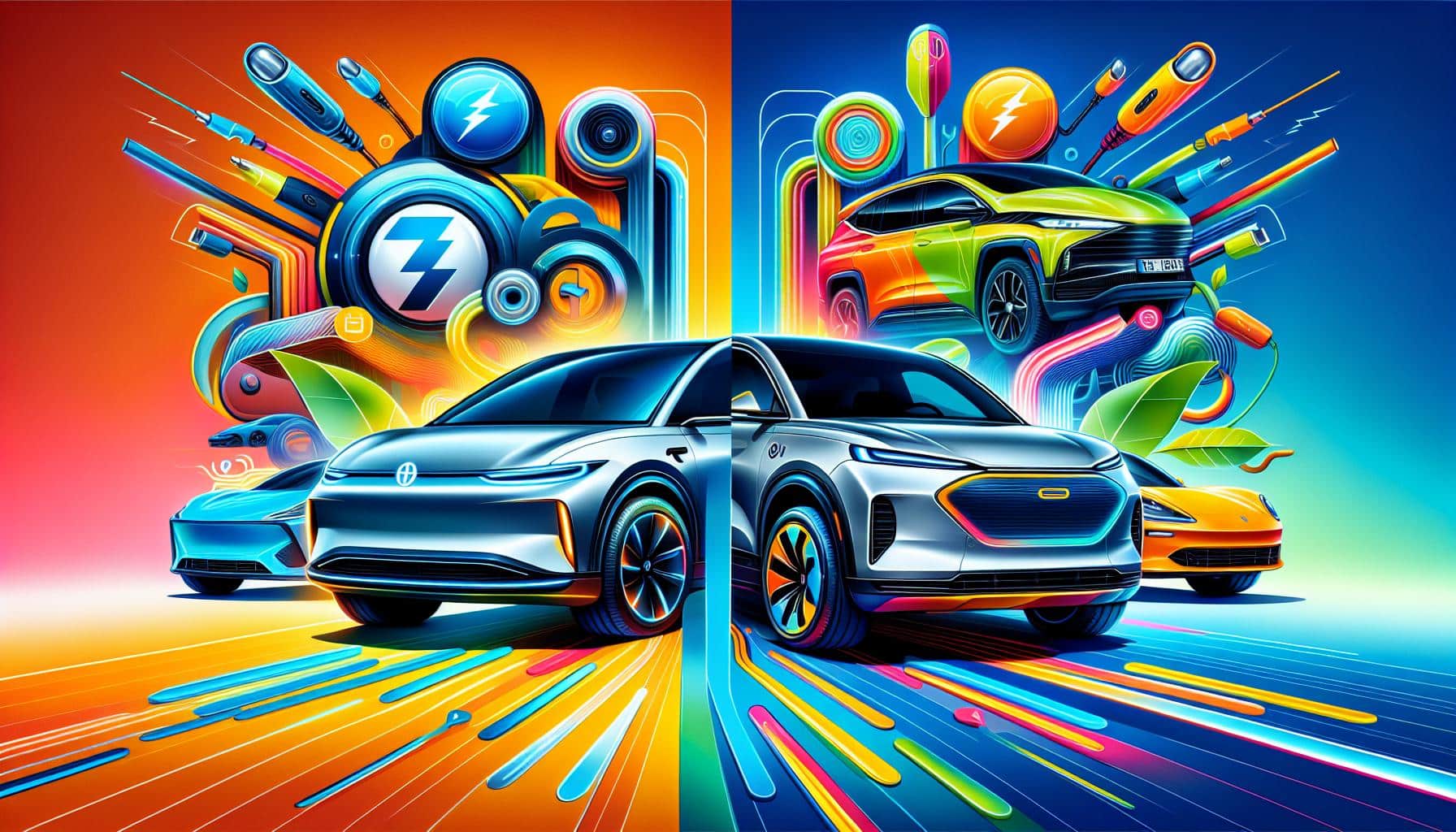Tesla Model 3: Examining the Strengths, Weaknesses, Opportunities, and Threats
The Tesla Model 3 has revolutionized the electric car industry with its sleek design, impressive range, and advanced technology. Let’s take a closer look at the strengths, weaknesses, opportunities, and threats of this groundbreaking vehicle.
Strengths:
One of the key strengths of the Tesla Model 3 is its exceptional range. With a fully charged battery, the Model 3 can travel up to an impressive 353 miles, making it one of the longest-range electric cars on the market. Additionally, Tesla’s Supercharger network provides fast and convenient charging options, alleviating range anxiety for owners. The Model 3 also boasts impressive acceleration, with the ability to go from 0 to 60 mph in as little as 3.1 seconds, depending on the configuration.
Weaknesses:
One of the main weaknesses of the Tesla Model 3 is its price point. While the Model 3 is more affordable than Tesla’s other models, it is still relatively expensive compared to other electric cars in its class. Another weakness is the lack of physical buttons and dials in the interior. The minimalist design may be appealing to some, but others may find it inconvenient to have to rely solely on the touchscreen for basic functions while driving.
Opportunities:
Tesla has an opportunity to continue expanding its Supercharger network, making it even more convenient for Model 3 owners. Additionally, as electric vehicle adoption continues to increase, Tesla can capitalize on the growing demand for electric cars by expanding its production capacity. The company can also explore partnerships with other companies to further improve its technology and broaden its customer base.
Threats:
One of the biggest threats to the Tesla Model 3 comes from other automakers entering the electric car market. Competitors such as Volkswagen, with its ID.4, are introducing their own electric vehicles that offer comparable features and performance. Additionally, the availability of government incentives and subsidies for electric cars could impact the demand for the Model 3 if other manufacturers offer more attractive incentives.
Volkswagen ID.4: A Comprehensive SWOT Analysis of the Electric SUV
The Volkswagen ID.4 is Volkswagen’s first fully electric SUV and is poised to make a significant impact in the electric car market. Let’s conduct a comprehensive SWOT analysis of this electric SUV to understand its strengths, weaknesses, opportunities, and threats.
Strengths:
One of the main strengths of the Volkswagen ID.4 is its spacious and practical interior. The ID.4 offers ample cargo space, comfortable seating, and a well-designed cabin. Another strength of the ID.4 is its competitive pricing. Volkswagen has positioned the ID.4 as a more affordable option compared to some of its competitors, making it an attractive choice for those looking to switch to electric vehicles.
Weaknesses:
One weakness of the Volkswagen ID.4 is its range compared to some other electric SUVs on the market. While the ID.4 offers a respectable range of up to 250 miles, it falls short in comparison to some of its competitors, such as the Tesla Model Y. Another weakness is the limited charging infrastructure compared to Tesla’s Supercharger network, which could be a concern for those planning long trips.
Opportunities:
Volkswagen has an opportunity to leverage its well-established brand and manufacturing capabilities to increase production and meet the growing demand for electric vehicles. The company can also tap into its existing dealer network to provide better access to charging infrastructure and after-sales support. Furthermore, Volkswagen can continue to improve the range and charging capabilities of the ID.4 to attract more buyers.
Threats:
One of the main threats to the Volkswagen ID.4 comes from other automakers entering the electric SUV market. Competition from established brands such as Tesla and newcomers like Rivian and Lucid Motors could impact the sales of the ID.4. Additionally, any negative perception or issues related to the reliability and durability of electric vehicles, in general, could hinder the adoption of the ID.4.
Breaking Down the Pros and Cons: Tesla Model 3 versus Volkswagen ID.4
When comparing the Tesla Model 3 and the Volkswagen ID.4, it is important to consider the pros and cons of each vehicle. Here’s a breakdown of the strengths and weaknesses of these electric cars.
Tesla Model 3 Pros:
– Exceptional range, up to 353 miles, alleviating range anxiety.
– Impressive acceleration, going from 0 to 60 mph in as little as 3.1 seconds.
– Convenient access to Tesla’s Supercharger network for fast charging.
– Advanced autopilot and self-driving capabilities.
– Sleek and minimalist design.
Tesla Model 3 Cons:
– Relatively high price compared to other electric cars.
– Minimalist interior design may not appeal to everyone.
– Reliance on touchscreen for basic functions can be inconvenient.
Volkswagen ID.4 Pros:
– Spacious and practical interior, with ample cargo space.
– Competitive pricing compared to some other electric SUVs.
– Well-established brand and dealer network.
– Access to Volkswagen’s charging infrastructure and after-sales support.
Volkswagen ID.4 Cons:
– Limited range compared to some competitors.
– Less developed charging infrastructure compared to Tesla’s Supercharger network.
Assessing the Competitive Landscape: SWOT Comparison of Tesla Model 3 and Volkswagen ID.4
In the highly competitive electric car market, it is important to assess the strengths, weaknesses, opportunities, and threats of each vehicle to understand their standing in the overall landscape. Let’s compare the Tesla Model 3 and the Volkswagen ID.4 using a SWOT analysis.
Tesla Model 3:
– Strengths: Exceptional range, fast acceleration, convenient Supercharger network.
– Weaknesses: Relatively high price, minimalist interior design.
– Opportunities: Expansion of Supercharger network, increased production capacity.
– Threats: Competition from other automakers, availability of attractive government incentives.
Volkswagen ID.4:
– Strengths: Spacious interior, competitive pricing, well-established brand.
– Weaknesses: Limited range, charging infrastructure.
– Opportunities: Leveraging brand and manufacturing capabilities, improving range and charging capabilities.
– Threats: Competition from established brands and negative perception of electric vehicles.
Electric Car Showdown: Uncovering the Strengths and Weaknesses of Tesla Model 3 and Volkswagen ID.4
In the battle of electric cars, the Tesla Model 3 and the Volkswagen ID.4 both bring unique strengths and weaknesses to the table. Let’s uncover the key aspects of these vehicles.
The Tesla Model 3 stands out with its exceptional range and fast acceleration. With a range of up to 353 miles and the ability to go from 0 to 60 mph in as little as 3.1 seconds, the Model 3 offers impressive performance. The convenience of Tesla’s Supercharger network further enhances the ownership experience. However, the Model 3’s relatively high price and minimalist interior design may deter some potential buyers.
On the other hand, the Volkswagen ID.4 offers a spacious and practical interior at a more competitive price point. Volkswagen’s well-established brand and dealer network provide a level of comfort and accessibility for buyers. However, the ID.4 falls short in terms of range compared to some of its competitors, and the charging infrastructure is not as developed as Tesla’s Supercharger network.
In conclusion, the Tesla Model 3 and the Volkswagen ID.4 are both strong contenders in the electric car market. The Model 3 excels in range and performance, while the ID.4 offers a practical and affordable option. As the industry continues to evolve, it will be interesting to see how these two vehicles fare against each other and other competitors in the ever-growing electric car segment.













